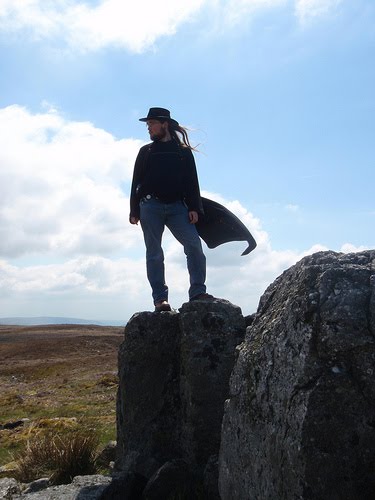There are many different ways to do an animation. I'll tell you the one I find easiest.
1. Where it says "SR:2-model" (on the bar near the top.) click the arrow button and select "SR:1-Animation". Three more sub windows will appear.
2. On the sub window below the 3d view click the red circle button a drop down list box will appear beside it. click its arrow and choose "Add/Replace keys"
3. If you move, scale or rotate an object (by object I mean object, camera, lamp etc.), a lines will appear in the far right window, the "IPO curve editor" The object is now set to be at that position, scale and rotation for the currently selected frame. The current frame is shown on the "buttons" window and the "time line" window as a number (probably 1 at the moment) with an arrow either side of it. It is also shown as a green line on the "ipo curve editor".
4. Move forwards a few frames, the left and right arrows go backwards and forwards (respectively) by 1 frame, the up and down arrows, by 10.
5. move, scale, or rotate the object again, to set its ipo curves for the new frame. You should see that the "curves" are no longer straight lines, but curves, constrained to two points.
6. keep doing this until you've told the object how it's meant to move for the entire animation.
7. if you want to change the length of the animation change the number in the "start:" or "end:" buttons.
8. you can click the play button, or press Alt and A to play back the animation. To get the best idea of ho it'll look rendered, set the view to camera before hand.
Ipo curves can be selected and edited in a similar manner to meshes.
Rendering an animation.
1. In the "render" menu at the top there is an option, render animation, click it. A window will appear and render each frame of your animation. the frames will be saved as jpegs in the default directory. if something's not right, press Esc to quit the animation.
2. to change, or find out, the directory it saves the renders to go to the "Scene" tab in the buttons window (or press F10). The first directory selector in the little panel on the left shows where it saves the renders.
3. To save the animation as a video file rather than a series of pictures, look to the little panel on the right of the buttons sub window. Where it says Jpeg, click the arow and change it to a video format. I tend to use AVI Jpeg.
4. Now if you render the animation it'll save it as a single video file in the selected directory called something like "001-250.AVI", you're now ready to do what ever video processing you want, or just upload it straight to you tube.
There are far more complicated things you can do with ipo curves and animation, but this should be enough to get you started.
If you have any questions, don't hesitate to ask.
Good luck.
Subscribe to:
Post Comments (Atom)




No comments:
Post a Comment